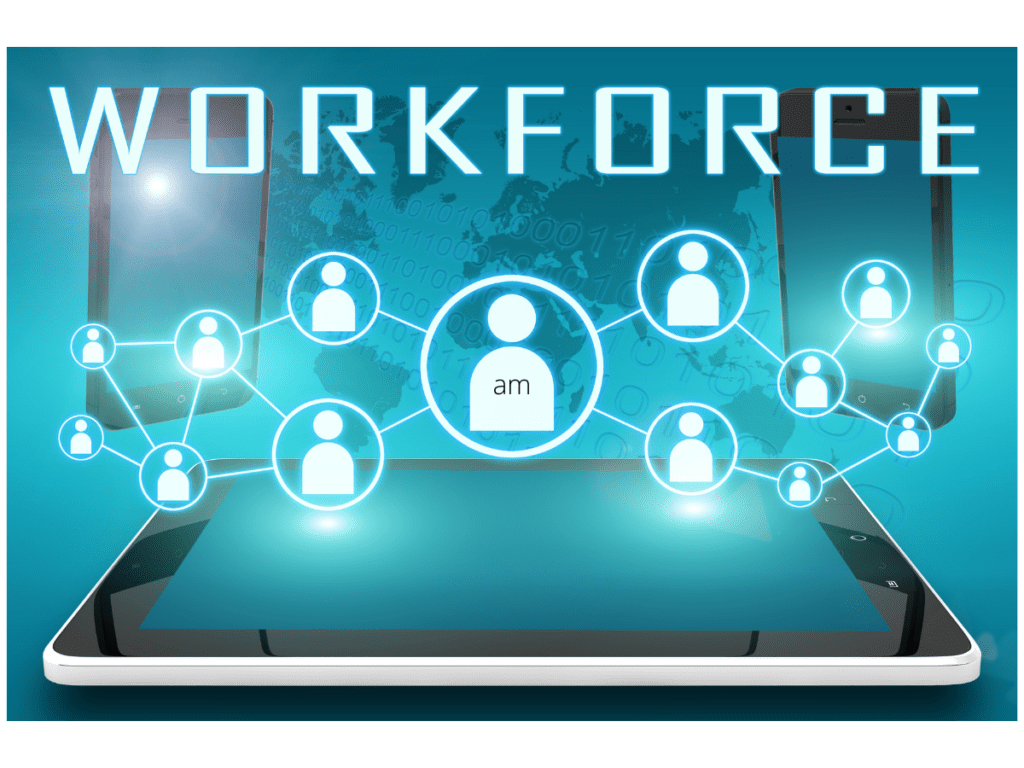“An empowered and enriched workforce is the backbone of a company’s success”
– Ananya Birla
Want to cut expenses, enhance productivity, automate operations, and raise team morale? Many firms have been looking for this unicorn solution, and many have found it by embracing workforce management (WFM). The importance of Workforce management has never been more critical. But what is workforce management? Workforce management is a collection of approaches for allocating resources, improving efficiency, forecasting workloads, and managing schedules.
It may be complex, but the importance of workforce management in creating an empowered and enriched workforce is too vital for any firm to overlook.
What is Workforce Management?
If you’re in a position of responsibility, you’ve probably heard the phrase “workforce management.” You probably have a hazy sense of what it entails, but properly comprehending it may significantly boost your leadership abilities.
Workforce management is a collection of techniques businesses use to instruct employees to be in suitable locations at the correct times to minimize risks and enhance productivity. It is a top-down method that begins with leadership developing specified strategic goals so companies can see how future decisions will be made.
WFM originated in contact centre environments in the 1980s as a technique to increase consistency and efficiency, and it has since spread to a wide range of sectors. Businesses use WFM to enhance time management, anticipate workloads, provide analytical insights, and speed up staff scheduling.
The Workforce Management Software market is expected to reach $4890.7 million by 2028, up from $2854.5 million in 2021, at a 7.9% CAGR between 2022 and 2028.
How does it work?
To understand the importance of Workforce Management, you must understand the problems in any workplace and how a workforce management system works.
Our earlier blogs have discussed a great deal about the different workplace and workforce-related problems that exist, such as:
- Overtime
- Fair scheduling
- Communication
- Workplace Violence
And the list goes on. So how does a workforce management system come in here?
Optimal Workforce Management System
The best WFM system achieves the optimum balance between the quantity of work necessary and the number of people needed to handle that job. Building a successful system takes time, so don’t anticipate instant gratification. When establishing a WFM plan, most businesses must take the following steps:

- Strategic Direction: Leadership demonstrates short- and long-term goals, then determine how the workforce must be aligned to achieve those goals.
- Analysis: Organizations can identify process overlaps and gaps by gathering data and analyzing their present staff.
- Identify Solutions: Some several tools and technologies may be utilized to implement WFM principles, and the best ones will ultimately rely on the current workforce and future goals.
- Standardize Processes: Develop standardized procedures for the workforce after executing the appropriate WFM solutions.
- Implementation of Automation: Adding automation wherever possible results in a more simplified WFM process that increases productivity while decreasing expenses over time.
- Monitor Progress: As objectives change, so will WFM systems, so be ready to monitor progress, evaluate performance, and make modifications as needed.
The Importance of Workforce Management: The Future is Now
There is little doubt that the typical workforce is rapidly changing. In recent years, contingent labour and more flexible working schedules have gradually supplanted the nine-to-five permanent workforce. Many of your workers most likely work from home, arrive early or depart late, and determine their work hours to fit their lifestyles better. You’ve undoubtedly also expanded the number of contingent workers—those recruited temporarily.
As the workforce evolves, it will become more challenging for you to manage your employees and your contingent workers. Staffing and scheduling will become more complicated than ever before. You’ll need assistance keeping track of your employees.
Importance of strategic workforce management
Companies must become streamlined and efficient to remain successful in today’s competitive business climate. That means obtaining the most value for the least amount of money. If your personnel is not managed strategically, you may be squandering precious time and money due to low productivity and high payroll expenditures. And this might have a significant impact on your profits.

Scheduling too few personnel during busy hours might result in a negative reputation and decreased customer satisfaction. Poor recruiting decisions may also harm production and morale and jeopardize your brand’s reputation. Overstaffing, on the other hand, may cost you money and time.
Efficient workforce management is more critical than ever. Workforce management may assist you in getting more out of less. You’ll be able to obtain visibility into any prospective skills deficit or personnel shortage with the correct data, allowing you to make smarter recruitment decisions. Greater visibility will allow you to notice previously unseen possibilities and difficulties. Furthermore, predictive forecasting can help you better understand future demand, allowing for more effective scheduling. Real-time workforce data is crucial to ensure that your company activities are less time-consuming and more cohesive and efficient. You’ll be able to give outstanding service at the lowest possible cost with innovative staff management.
How Celayix can help

Celayix has been assisting firms in improving workforce management for over 20 years. During that time, we have helped businesses save over $100,000, eliminate overtime, and considerably grow their businesses. Companies wishing to optimize internal procedures can use our shift scheduling, time and attendance software. We’ve been working on features that will aid business planning, forecasting, budgeting, and productivity. Our solution experts would be pleased to walk you through how Celayix can help you with workforce management.





